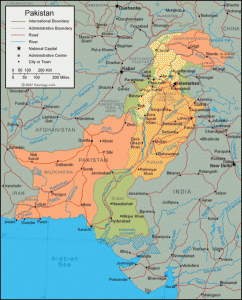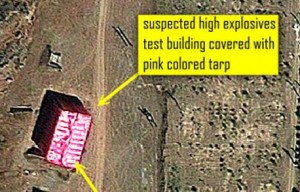AP’s George Jahn, ISI’s David Albright Re-run Allegations of Iranian Bomb Calculations
Breathlessly calling today’s story an “AP Exclusive“, George Jahn sticks to his usual routine of depending on “diplomats” to leak information on Iran and then using David Albright to cast the information in a way calculated to make it look as though Iran has made new, major breakthroughs in efforts to develop a nuclear weapon. Today’s effort is more transparent than a pink tarp, with Jahn’s article itself finally getting around to noting that everything claimed to be an “exclusive” in the article was already noted in IAEA’s November, 2011 report.
Jahn’s opening:
The U.N. atomic agency has received new intelligence that Iran has moved further toward the ability to build a nuclear weapon by advancing its work on calculating the destructive power of an atomic warhead, diplomats tell The Associated Press.
And then, of course, we need Albright to add just the right spin:
“You want to have a theoretical understanding of the working of a nuclear weapon that is then related to the experiments you do on the various components,” said David Albright, whose Washington-based Institute for Science and International Security is a frequent go-to source on Iran for Congress and other U.S. government branches. “The two go hand-in-hand.”
Such computer mock-ups typically assess how high explosives compress fissile warhead material, setting off the chain reaction that results in a nuclear explosion. The yield is normally calculated in kilotons.
Now that we have been properly scared into believing there is new and damning evidence against Iran, let’s see what Jahn finds when he goes back to the November, 2011 IAEA report:
The IAEA first outlined suspicions in November that Iran was working on calculating the yield of a nuclear weapon, as part of a 13-page summary of Iran’s suspected nuclear weapons work that it said was based on more than 1,000 pages of research and intelligence from more than 10 member nations.
It said then that “the modeling studies alleged to have been conducted in 2008 and 2009 by Iran … (are) of particular concern,” adding that the purpose of such studies for calculating anything other than nuclear explosion yields is “unclear to the agency.”
Albright, of the Institute for Science and International Security, said such computer-run modeling is “critical to the development of a nuclear weapon.”
So Jahn admits that this “new” information is basically just a re-run of what was stated in November by the IAEA. I guess Jahn and his handlers decided that not enough attention had been paid to this particular nugget of information, and so a new “exclusive” was needed in order to focus more attention on it. That is a very brave move after being punked so badly by the pink tarps.
At least Jahn got one sentence correct:
Any new evidence of Iranian research into nuclear weapons is likely to strengthen the hand of hawks in Israel who advocate a military strike on Iran.
Next week, perhaps Jahn and Albright can provide analysis of all Google searches from Iran on “nuclear weapons”. I’m sure Jahn’s “diplomat” friends can provide those for us.




